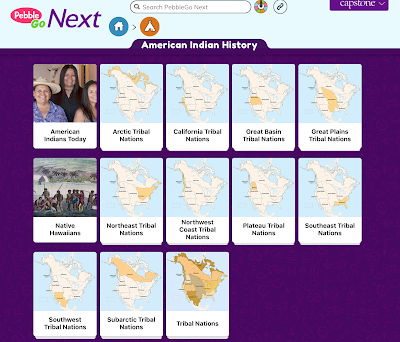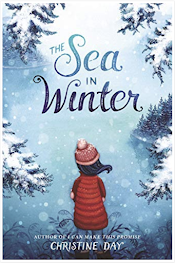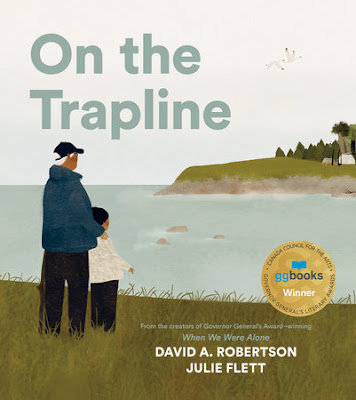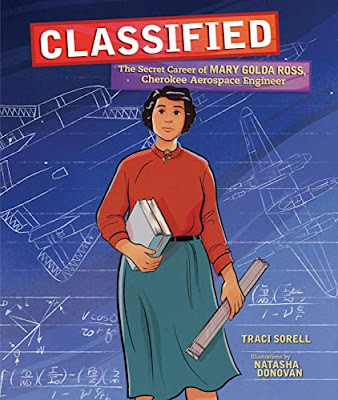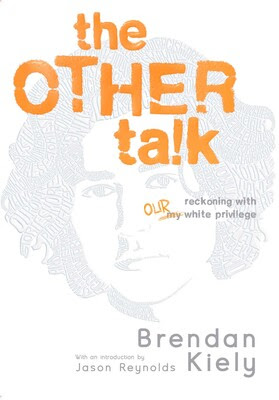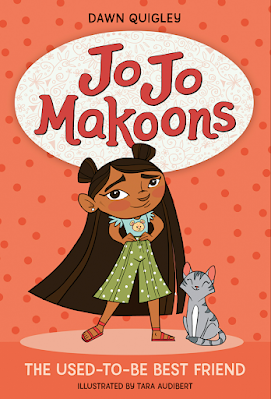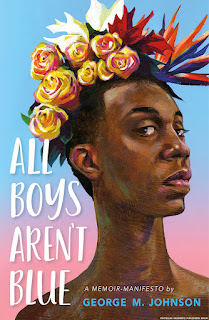The Hopi nation is made up of many different villages. Hopi people identify closely with their own village. Their own village is much more important to them than the Hopi nation as a whole."
- Home
- About AICL
- Contact
- Search
- Best Books
- Native Nonfiction
- Historical Fiction
- Subscribe
- "Not Recommended" books
- Who links to AICL?
- Are we "people of color"?
- Beta Readers
- Timeline: Foul Among the Good
- Photo Gallery: Native Writers & Illustrators
- Problematic Phrases
- Mexican American Studies
- Lecture/Workshop Fees
- Revised and Withdrawn
- Books that Reference Racist Classics
- The Red X on Book Covers
- Tips for Teachers: Developing Instructional Materi...
- Native? Or, not? A Resource List
- Resources: Boarding and Residential Schools
- Milestones: Indigenous Peoples in Children's Literature
- Banning of Native Voices/Books
Tuesday, January 11, 2022
A Second Look at PebbleGo Next
Tuesday, January 04, 2022
Indigenous Nations in Nonfiction
Monday, January 03, 2022
Debbie Reese in THE WEEK, JUNIOR
On July 2, 2021, an interview of me was published in The Week, Junior. I was thrilled that they knew about AICL, and that they wanted to tell their readers about my work. In June, I think, I started getting notes from friends and colleagues who subscribe to it, sharing their delight in seeing me on one of the pages. It was a terrific high for me!
AICL has been around since 2006, pointing out bias and misrepresentation of Native peoples, and shining a bright light on excellent books by Native writers. A heartfelt kú'daa to those who read and share what we publish here on AICL.
Tuesday, December 28, 2021
Highly Recommended: THE FIRE by Thomas Peacock
Written by Thomas Peacock (Fond du Lac Band of Lake Superior Ojibwe)
Illustrations by Anna Granholm
Published by Black Bears & Blueberries
Published in 2021
Reviewer: Jean Mendoza
Review Status: Highly Recommended
This story is a fictionalized account of the Great Fire of 1918 based on an interview of Elizabeth (Betty) Gurno, a Fond du Lac Reservation elder. Betty was a little girl when the fire swept the area. The Fire of 1918 destroyed the city of Cloquet, Minnesota and surrounding communities, including the Fond du Lac Reservation, and resulted in the loss of many lives.
Author Thomas Peacock frames Betty's telling of the story within a later-day classroom scene in Minnesota. Betty has come to her grandchild's classroom to share her memories of the fire.
First reason to recommend The Fire: It focuses on Indigenous people's experience during a catastrophic event, and joins a fairly small pool of exciting and moving historical fiction picture books told from an Indigenous perspective. In The Fire, Ojibwe oral history is at the center. The author uses some words in Ojibwemowin and refers to Ojibwe traditions (such as offering asemaa, tobacco, to an elder who shares wisdom).
Second reason: It's timely. Wildland fires have affected communities around the country in recent years. Children are wondering how such fires can happen, how people survive them, and what happens afterward. Young readers may want to do further research about the Great Fire of 1918, using sources like the National Weather Service article and a dedicated page on the Library of Congress Web site.
Third reason: The illustrations amplify the storytelling. There's plenty of drama in the pictures. Burning boards fly through the air; dozens of animals join the people in the river as the fire rages. But there are also some important, more subtle touches. Look closely at the page that shows Betty's grandparents warning her family about the fire. The hazy trees and yellowish sky behind the horse and buggy aren't just meant to be pretty. That's the smoke, already drifting into Fond du Lac, a silent warning.
Fourth reason: The story manages to locate modest, honest hope and affirmation in the aftermath of the disaster. Readers learn that no Ojibwe people died, but "more than four hundred fifty of our non-Native neighbors were lost in the fire," and several non-Native towns burned to the ground. (For comparison, I checked the estimated death toll of the Chicago Fire of 1871 -- around 300.) Grandma Betty recounts that her grandmother's home escaped the fire, and she shared what food she had with other Fond du Lac families, most of whom had lost everything. I love the final words of Grandma Betty's storytelling: "We help each other. That is what we do." (It reminds me of the values behind Richard Van Camp's little board book, May We Have Enough to Share.)
I also love that when Betty ends her storytelling, the children line up to hug her. Maybe that's a classroom custom. But I think it also shows that the children are moved by this elder's story of the trauma she and their community endured, and they are caring for her in their way, years afterward.
The Fire is a valuable book to have on your shelves, and to share with children you know.
Monday, December 20, 2021
HIGHLY RECOMMENDED: THE SEA IN WINTER
By Christine Day (Upper Skagit)
Back in September 2020, Debbie blogged about her positive reaction to reading the ARC of Christine Day's second novel for young people -- The Sea in Winter. Since then, the book has gotten positive critical attention, including a Kirkus starred review and School Library Journal "Best Book". Here, finally, is my "short and sweet" AICL review.
The publisher, Heartdrum, says this about The Sea in Winter:
It’s been a hard year for Maisie Cannon, ever since she hurt her leg and could not keep up with her ballet training and auditions. Her blended family is loving and supportive, but Maisie knows that they just can’t understand how hopeless she feels.... Maisie is not excited for their family midwinter road trip along the coast, near the Makah community where her mother grew up. But soon, Maisie’s anxieties and dark moods start to hurt as much as the pain in her knee. How can she keep pretending to be strong when on the inside she feels as roiling and cold as the ocean?
Reason One to recommend The Sea in Winter: The sense of place.
The author writes from the heart when she describes the story's setting. It's good to have a book about a contemporary middle schooler, that celebrates geoduck clams and the removal of the Elwha River dam. It's set in much the same part of the continent as a certain popular vampire-and-werewolf series, but Day's storytelling is noticeably more attuned to the landforms, the weather, the animals, the sea.
Reason Two: Respect for advocacy and activism.
Advocacy for social and environmental justice, and for Indigenous rights, are natural parts of family life in Maisie's world. For example, readers learn that her family has been directly affected by treaty rights to harvest shellfish, and removal of dams that kept salmon from spawning in local rivers. And conflict around the 1999 Makah whale hunt (the tribe's first effort to hold its traditional hunt in 70 years) forced an important decision for some of Maisie's Makah relatives.
Reason Three: The protagonist's unique perspective.
The Sea in Winter offers the young reader a window on the experience of a child with an unusual level of ambition. Most children Maisie's age haven't discovered an activity that inspires the kind of commitment she has to ballet. What is it like, at age 12, to have your entire life, including peer friendships, revolve around ballet, because you love it that much? Who else understands such dedication? And how do you cope, at age 12, when you face the loss of your beautiful dream? Is that what depression feels like?
Reason Four: Maisie's solid, loving Native family.
Leo Tolstoy famously, or infamously, wrote, "All happy families are alike; every unhappy family is unhappy in its own way." Though Maisie's family faces some challenges, including Maisie's depression, they are fundamentally "happy" together -- affectionate, thoughtful, supportive, respectful of boundaries, and knowledgeable about their Native identities. But they're by no means ordinary, stereotypical, or indistinguishable from other fictional families that are doing essentially okay. The author makes them interesting, not merely quirky or weird, as individuals and as a unit.
In short, I add my voice to the chorus of recommendations: Read and share The Sea in Winter with young people in your life!
Wednesday, December 01, 2021
AICL's Best Books of 2021
 |
| A Sample of AICL's Best Books of 2021 |
Those who study and write about children's books will mark 2021 as a significant year because it is the year that Heartdrum (an imprint of HarperCollins) released several books written and illustrated by Native people. Heartdrum's first book, The Sea In Winter by Christine Day (enrolled, Upper Skagit), is outstanding. We read an advanced copy of it in 2020 and highly recommended it. You will find it below, along with several books we read from Heartdrum. What Heartdrum represents is important. Cynthia Leitich Smith (Muscogee Creek) brought it into existence. For all that she has done, she was named as the recipient of the 2021 NSK Neustadt Prize for Children's Literature. Three of her books were republished this year. In our articles, book chapters, and presentations, we usually include one or more of her books. We're pleased to see the new updated versions and you'll find them listed below.
Books Written or Illustrated by non-Native People
Tuesday, November 30, 2021
RECOMMENDED: NENABOOZHOO AND THE ELK'S HEAD
Nenaboozhoo is a prominent figure in the Anishinaabe traditional stories that have been published over the years. He appears in several picture books published in the past couple of years. I hope to review all of them eventually, but today I'm taking a "short and sweet" look at just one: Nenaboozhoo and the Elks's Head/Nenaboozhoo miinawaa Adik Odishtigwaan.
Here's my quick summary of the story:
Nenaboozhoo tricks an elk into lending him a beautiful bow and arrow, and then kills the elk for food. The trees that witness this treachery let their displeasure be known, but Nenaboozhoo is quite pleased with himself. Before long, though, he gets his comeuppance, as he often does, showing listeners how NOT to act.
I'd recommend this story for upper elementary age children, and older.
First reason to recommend this book: Native people are involved at all levels of its publication. It's an Ojibwe traditional story retold in a collaboration between Dr. Giniwgiishig (a school principal) and Niizhobines, an Ojibwe elder and storyteller. It's bilingual, in English and Ojibwemowin. And the publisher is the Native-owned non-profit Black Bears and Blueberries.
Second reason: The book has a mission. Initially the story was part of the Indian Education Curriculum for Red Lake (MN) School District #38. The front matter includes this dedication:
This endeavor is for our children so that they will know who they are and where they come from and to learn our language so they will be strong and proud that they are Anishinaabe and stand up and lead and succeed.
There's another statement in the front matter of this book and several of the others mentioned under my Reason 4, below: "The stories in these books are told only when snow is on the ground and a tobacco offering is made." This tells the reader that even though this story and others like it are engaging, the sharing of them is important enough that there's a protocol for doing so. They were never intended just for amusement.
Third reason: Kids who aren't Anishinaabe can engage with and learn from the book, too. Just seeing Ojibwemowin in print can affirm for them that specific Indigenous languages exist and have value -- Native people don't just "talk Indian". Like many traditional stories, this one is an opportunity for considering how to treat others, and how a person's self-centered actions can have uncomfortable consequences.
Fourth reason to recommend Nenaboozhoo and the Elk's Head: It's just one of several bilingual English-Ojibwemowin books published by Black Bears and Blueberries that belong in classroom libraries. They include:
- by Dr. Giniwgiishig and Niizhobines -- Why the Bear Has a Short Tail; How the Boy and the Rabbit Helped Each Other; Nenaboozhoo Steals Fire; and When the Boy Was Made into a Whirlwind.
- by Liz Granholm -- Rabbit and Otter; Rabbit and Otter go Sugarbushing
- by Tara Perron -- Animals of Nimaamaa-Aki (Dakota version is Animals of Kheya Wita)
You can find out more about the bilingual books put out by Black Bears and Blueberries on their Web site.
Highly Recommended: ON THE TRAPLINE by David A. Robertson and Julie Flett
Ininimowin means "Cree language."
Monday, November 29, 2021
Highly Recommended! CLASSIFIED:THE SECRET CAREER OF MARY GOLDA ROSS, CHEROKEE AEROSPACE ENGINEER, by Traci Sorell and Natasha Donovan
Sunday, November 28, 2021
Highly Recommended: THE OTHER TALK: RECKONING WITH OUR WHITE PRIVILEGE by Brendan Kiely
The facilitators were about to move on to their next exercise when a Native American woman in the audience stood up. She wanted to know why the racetrack model, why the entire workshop, did not include or allude to, in any way, Indigenous people in the United States. "This," she went on to explain, "is the kind of erasure we face every day."
Highly Recommended! LOOK GRANDMA! NI, ELISI! by Art Coulson; illustrated by Madelyn Goodnight
Saturday, November 27, 2021
Highly Recommended: JO JO MAKOONS, THE USED-TO-BE BEST FRIEND by Dawn Quigley; illustrations by Tara Audibert
Hello/Boozhoo—meet Jo Jo Makoons! Full of pride, joy, and plenty of humor, this first book in an all-new chapter book series by Dawn Quigley celebrates a spunky young Ojibwe girl who loves who she is.
Jo Jo Makoons Azure is a spirited seven-year-old who moves through the world a little differently than anyone else on her Ojibwe reservation. It always seems like her mom, her kokum (grandma), and her teacher have a lot to learn—about how good Jo Jo is at cleaning up, what makes a good rhyme, and what it means to be friendly.
Even though Jo Jo loves her #1 best friend Mimi (who is a cat), she’s worried that she needs to figure out how to make more friends. Because Fern, her best friend at school, may not want to be friends anymore…
Do you wanna know what mooshoom means? It means "grandpa" in the Michif language.
Try saying: "Jo Jo Makoons Azure nindizhinikaaz."
My girl, shots help you to be healthy. There are many sicknesses out there, and shots give good protection.
Friday, November 26, 2021
HIGHLY RECOMMENDED! THE CASE OF THE BURGLED BUNDLE: A MIGHTY MUSKRATS MYSTERY
Written by Michael Hutchinson (Misipawistik Cree Nation)
Published by Second Story Press
Publication Year 2021
Reviewed by Jean Mendoza
Review Status: Highly Recommended
Oh, the joys of a good mystery! This year saw publication of the third book in the middle-grade Mighty Muskrats series by Michael Hutchinson (Cree). This is a "Short and Sweet" review.*
The publisher, Second Story Press, says this about The Case of the Burgled Bundle:
The National Assembly of Cree Peoples has gathered together in the Windy Lake First Nation, home to the Mighty Muskrats -- cousins Chickadee, Atim, Otter, and Sam. But when the memory bundle, the center of a four-day-long ceremony, is taken, the four mystery-solving cousins set out to catch those responsible and help protect Windy Lakes reputation!... [P]rime suspect and long-time bully Pearl takes off to the city with her older brother and known troublemaker, Eddie. If they've brought the burgled bundle with them, the Mighty Muskrats fear it may be lost for good.
Here's my first reason of four to highly recommend this book: Authenticity. The author is Cree, and the setting is a fictional Cree community in what is currently known as Canada, with Cree characters who are believable, likable, and never stereotypical. The mystery confronting the young sleuths is plausible and meaningful in their community (though it can certainly resonate with non-Native readers). The resolution is surprising (to me, at least) but logical and satisfying in that context.
Second reason: Contemporary setting. As in the other two Mighty Muskrat books, current and ongoing issues for Indigenous people are central to the action. But it doesn't feel like like the author merely wants to make the story more timely or "more Indigenous," and he's not talking down to his readers, either. For example, from the very beginning, the reader gets a sense that unwelcome changes are afoot: without consulting all the leaders, someone with influence has changed the location of the important opening ceremony. It's a political decision that excludes most of the Cree people who expected to witness it. This developing situation especially concerns the Muskrats' Grandpa, who's an important recurring character.
Third reason: What's in the details. Hutchinson continues to embed factual information about Cree history and present-day life into his stories to convey the significance of what's going on. In the first chapter, for example, there's an especially poignant image of a middle-aged Cree man speaking in Cree to "an ancient woman," a frail elder seated beside him. He's telling her what he hears as he tries to listen in to the ceremony that was supposed to be public, but isn't. In one brief passage, readers see that Cree is a living language, that respect for elders is important, and that people are distressed but resourceful in response to being cut off from an important cultural event.
Fourth reason to highly recommend The Case of the Burgled Bundle: It's just a really engaging mystery.
A word of caution: I'm not Cree, and can't speak to the authenticity of the descriptions of the meeting of Cree nations or Cree traditions. If Cree readers of AICL see that I've missed something important, please let me know so I can note it here.
*A Short and Sweet rec is not an in-depth analysis. It is our strategy to tell you that we recommend a book we have read. We will definitely refer to it in book chapters and articles we write, and in presentations we do. Our Short and Sweet Recs include four reasons why we recommend the book.
Wednesday, November 24, 2021
Highly Recommended! Unspeakable: The Tulsa Race Massacre
"... a sensitive and powerful introduction to the Tulsa Race Massacre, helping young readers understand the events of the past so we can move toward a better future for all."
Monday, November 22, 2021
"Debbie, can you recommend some books about Thanksgiving?"
- Misrepresent historical facts
- Stereotype Wampanoag people
- Erase the Wampanoag people by failing to name them (defaulting to the general "Pilgrims and Indians" or "Pilgrims and Native Americans")
As you read it you can point out the parts of the story that show readers it is set in the present day. You could draw attention to the page that talks about how Josie's family worked all winter long, to get her ready to dance. I especially love this page, of a woman at a sewing machine:
Sunday, November 14, 2021
Highly Recommended: ALL BOYS AREN'T BLUE: A MEMOIR-MANIFESTO by George M. Johnson
In a series of personal essays, prominent journalist and LGBTQIA+ activist George M. Johnson explores his childhood, adolescence, and college years in New Jersey and Virginia. From the memories of getting his teeth kicked out by bullies at age five, to flea marketing with his loving grandmother, to his first sexual relationships, this young-adult memoir weaves together the trials and triumphs faced by Black queer boys.
Both a primer for teens eager to be allies as well as a reassuring testimony for young queer men of color, All Boys Aren't Blue covers topics such as gender identity, toxic masculinity, brotherhood, family, structural marginalization, consent, and Black joy. Johnson's emotionally frank style of writing will appeal directly to young adults.
... American Indians sharing food with the Pilgrims at the first Thanksgiving.
*takes deep breath*
What it doesn't show is that the Pilgrims stole the American Indians' food when they first arrived on the Mayflower, because they weren't prepared for winter.
We learned that Abraham Lincoln wasn't all he was cracked up to be. We learned about the Emancipation Proclamation, but also read some of the statements he made that weren't in the history books. The ones that were disparaging toward Black Americans and the fight for equality.
We learned that Lincoln had many thoughts that never seemed to make it into the pages of the history books.
He shares some of those statements made by Lincoln, including this one (p. 94):
"My paramount object in this struggle is to save the Union, and is not either to save or to destroy slavery. If I could save the Union without freeing any slave I would do it, and if I could save it by freeing all the slaves I would do it; and if I could save it by freeing some and leaving others alone, I would also do that."




